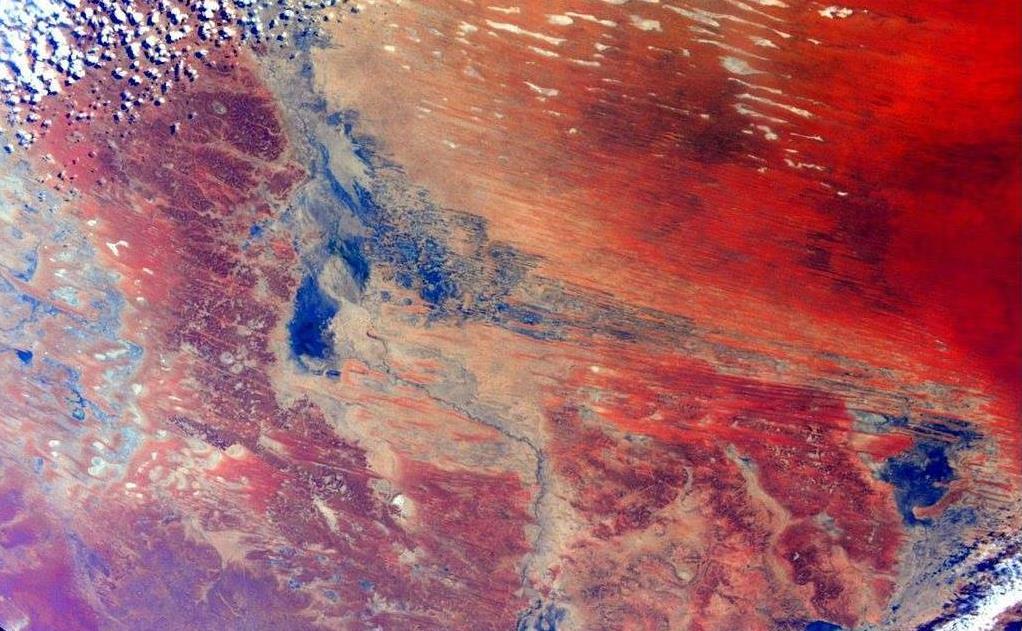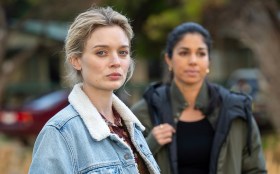Let’s open this review with a message of thanks. Everyone in the infrastructure around screen has worked like loons to find solutions, to have new ideas, and spread money and relief. Over 2020 I have talked to Screen Producers Australia and the other guilds as a primary source of information, backed by state agency people. Most contact with Screen Australia came through the website, and Caris Bizzaca is very valuable. Sandy George remains a treasure, and David Knox never gives up on television. But policy brains turn up in all sorts of places, quietly holding our world view together.
The story of the Australian screen sector is a tale of crisis and combat with the occasional outbreaks of common sense and even generosity. But 2020 has been a doozy with the best of them, mostly because it is so concentrated – and we haven’t seen the end of it yet.
Everyone has their own personal gasp points when shows were shut down, families lived like mole rats with wi-fi, and we perfected the insta-etiquette of Zoom. Production staff became amateur immunologists, insurance brokers held the keys to the kingdom, and great actors were quarantined like fluffy dogs (with the best chew-toys in town).
The story of the Australian screen sector is a tale of crisis and combat with the occasional outbreaks of common sense and even generosity.
But the strangest moment in policy, and perhaps the most enduring, was subtle. We discovered we had a federal minister who read the documents, remembered them, and can count in his head. Paul Fletcher even has the best website of any minister.
He warned us when he took the role that he wanted to sort the sector, but his political calculus is not ours. Instead, the report card is looking awful from the independents’ point of view.
Australian content regulations
In the middle of November, we published an account of the government’s plan to ‘reform the sector’, using its regulatory powers, which will be enforced by January 1, 2021. The ACMA report underlying them provided a neat summary. They are:
- streamlining and simplifying the Australian content rules applicable to commercial television broadcasters by 1 January 2021, so that the new modified quota can be met with a mix of Australian drama, children’s and documentary content
- removing the ‘P-preschool’ and ‘C-children’s’ minimum quota obligations on commercial television broadcasters by 1 January 2021, while maintaining existing safeguards for child audiences of C and P programs
- reducing the expenditure obligation on subscription television broadcasters for new Australian drama programming from 10% to 5% by 1 July 2021
- requesting that large video streaming services operating in Australia report to the ACMA on their level of investment in Australian content from 1 January 2021.
Basically, the commercial sector has cried poor and the government listened. The commercial broadcasters can still use NZ content to fulfil its quotas, can now abandon children’s television and use one serial per year to satisfy its obligations.
We should also note the takeover of Fairfax by Nine, which turns the major news systems into a duopoly which consists of Nine and Murdoch. Fairfax, a newspaper and radio organisation now owned by a television company, is sliding to the right of politics.
Counterbalancing this is are the government broadcasters; the government goes blue in the face trying to say it is not cutting the ABC but it is clearly true. Right now, the Liberal Party is fighting with the ABC over the fact that Four Corners allegedly violated the privacy of politicians, bringing Chair Ita Buttrose out in staunch defence.
The Rebates
The 40:20 tax rebate split between film and television projects was seen as the key failure in the new structure from the first day in which Screen Australia did business. Now the feds will take a new set of tax provisions to parliament to secure 30:30.
And the expenditure threshold for the rebate has gone from $500,000 to $1m, about which opinion is divided.
The difficulty for a smart document student like Fletcher, is that the sector consists of different nests working to contradictory rules which treat the marketplace in a variety of ways. In the end, commercial TV is there to make a profit and big indy production companies can campaign for streaming deals.
Missing from this discussion is the interlock between this mosaic of domains. The hardest bit to grasp is probably that the screen sector itself is migrating as it pleases, and it becomes very difficult to work out what is a cost centre, a profit centre, a loss leader and a branding exercise, all in a chaotic space in which the skills of the future are not what we expect.
COVID-19
The pandemic is by far the most concrete experience of the year. The industry did very well with government to create protocols, some companies worked out how to shoot TV, while post and scripting hung in. So far, there is no public indication that a single screen person has died.
Read more: Screenhub news in brief – big issues, small windows, some light gets in
From the very beginning the sector was hurt by the failure of Jobkeeper to match the realities of employment arrangements, as the government’s coarse grained system crashed its way across the economy full stop. Beyond the screen sector, our culture suffered from a government which wanted to be seen to help but secretly not spend the money, which retained the idea that people in financial difficulties should be made to suffer even more, and failed to understand how the landscape of the possible is shifting.
Read more: The Australian Directors Guild measures misery, supports new members
While we may lick our wounds, the wrecking of Arts and Humanities in the tertiary sector, the failure to support overseas students, and the commitment to coal will have long term implications we will come to regret. Why note this in an industry piece? Because we are a vital part of our culture, and our structures only make sense in terms of our broader civilisation.
Right now, the industry’s commitment to diversity, gender, disability and Indigenous culture – tatty and opportunistic though it seems in some parts – shows that we get where our future lies, much better than most of our politicians.
Read more: Hard data in the toughest market shows value of diversity.
The pivot (ha) to Zoomed performances, online conferences and virtual festivals has been an inspiration and will leave a trail of new ideas which will change how the indies create an international exhibition network, seminars and discussions and masterclasses are shared.
There have been some useful parts of the government’s behaviour to the sector through COVID. The increase in development funding, the extra money to Screen Australia and the Children’s Television Foundation, and the luring of footloose productions should be noted. The amounts are not huge but we have capacity limits anyway.
The biggest decision was the Temporary Interruption Fund, an insurance guarantee by any other name, which removed an evil impediment to financing.
Read more: Feds release insurance dosh
The future of COVID remains completely unknown, but the industry expects to be extremely busy for the next couple of years with international productions.
How the pandemic will affect brick and mortar cinemas is anybody’s guess.
The big streamers
To our provincial eye, the international situation is an unbelievable mess. We once had plans to do business with India. We saw China as a production and post production market. Probably gone but not really established anyway.
But Brexit is combining with the Tories’ hatred of the BBC to make a mess in our own linguistic heartland. The license fee, all £3.69bn for 2019, is surely on the way out, so the Beeb becomes even more dependent on the government. The Tories are crazy enough to leave the EU, compared to which bashing the public broadcaster is just a blip. The government seems to plan a horror Chair, while Tim Davie, the new Director-General comes mostly from marketing.
The major streamers are settling in for a huge production stoush, reflected in the way that so many of the large studios are already captured by them. But we are getting used to the idea that the owners of Disney, Warner, Apple and Amazon Prime are all behemoths for which media production is a small part of the corporate game. Don’t imagine they stand for art, justice, storytelling and a robust character – they see the whole system as a bunch of branding exercises.
Don’t imagine they stand for art, justice, storytelling and a robust character – they see the whole system as a bunch of branding exercises.
This year they ‘pivoted’ abruptly and intensely to streaming their online content and abandoning cinema releases, which is yet to play out in the exhibition market.
Here’s another twist: this is the Fletcher vision for 2021 via a green paper. Here is the section in our account:
The government wants to set ‘the percentage of their Australian revenue which SVODs and AVODs are expected to invest in Australian content, in the form of commissions, co‐productions and acquisitions.’ It will function like the current NEDE scheme which compelled Foxtel to spend 10% of gross revenue in certain genres on production until it was reduced to 5% in the last budget. One difference: it will cover all income from Australia, rather than income from specific genre strands.
The government will legislate the formal authority to ‘implement formal regulatory requirements on an SVOD or AVOD service that failed to meet expenditure expectations for two consecutive years.’
They will report to the Australian Communications and Media Authority. The proposal neatly sidesteps the sticky issue of how these regulations will be enforced by making the threat of enforcement the punishment itself.
There will be an eligibility test, for what the government calls:
A content service whose primary purpose is to provide professionally produced scripted content delivered over the internet to Australians.
Whew, that’s Youtube and Facebook out already except that they are increasingly filling up with professional material. And what about unscripted content like sport?
There will be a minimum audience, probably of one million with a gross annual revenue of $100 million, which includes subscriptions and advertising.
The proposal suggests that 5% of gross revenue will be spent on new Australian content with no limit on genres. If they don’t want to commission for themselves, streamers could simply put the 5% into the new CAST fund.
The tax regulations go to parliament to set up July 1 2021 as the transfer date. Television productions will be delayed until them, while film will race to get into production.
The feds will introduce a mandatory bargaining code between the digital platforms and news media businesses. This is the kind of constraint on the free market which the government likes. The Code will support a diverse and sustainable Australian news media sector, including Australia’s public broadcasters, by:
• encouraging the parties to undertake commercial negotiations outside the Code;
• enabling digital platforms to publish standard offers, which provides smaller news media businesses with an efficient pathway to finalising agreements with digital platforms;
• establishing a negotiation framework under the Code that allows both parties to bargain in good faith and reach binding agreements;
• ensuring that an independent arbiter is able to determine the level of remuneration that should be paid under a fair and balanced final offer arbitration model should the parties be unable to reach agreement; and
• setting clear and workable minimum standards for digital platforms including requiring 14 days advance notice of deliberate algorithm changes that impact news media businesses.
The Code will initially apply to Facebook NewsFeed and Google Search. Other digital platform services can be added to the Code in future if there is sufficient evidence to establish that they give rise to a bargaining power imbalance.
The most tangible plans are also part of that Green Paper. Fletcher, ever the avid reader, has a tricky plan reduce the spectrum allocations to broadcasters, including the ABC, sell the space and use it to set up a new set of content funds run through Screen Australia.
That will take a lot of work because it has to interlace with the existing system.
Also, the government plans to regulate the ABC and SBS:
The Government proposes to amend legislation to establish a clear and explicit requirement for the ABC and SBS to provide new Australian programming, in line with the obligations imposed (or proposed) for other sectors of the Australian media industry.
The Government also proposes to require the ABC and SBS to provide information about their investment in, and provision of, new Australian programming to the ACMA annually, again, in line with other media organisations.
Games
As the traditional boundaries between local and global, film and television, post and live production break down, the various agencies and their ministers have woken up to the real nature of the games industry. Australia has puddled around with bits of support for games since 2000, but the framework has tended to be industrial. Lots of jobs in young people shackled to their work stations.
That limited vision of games is long gone in the sector, which has campaigned consistently for a place in the cultural landscape. Now the politicians are learning that the same mechanisms to support linear production are just as necessary here. A share of the tax rebate pie, enterprise funding, export support, building commercial and financial expertise – the library of techniques have been ripe for the transfer.
Over this last year Screenhub has pushed thoroughly into the games space, through articles from Jini Maxwell.
She studied the impact of COVID, good and bad. Increased attention but more personal pain:
Like all of the creative sector, game development in Australia relies heavily on contractors, whose skills are acquitted on a range of projects via short contracts but without the face-to-face connection of community events, in-person game jams, meetups, and conferences are put on hold, it will be much harder to break in.
The IGEA-proposed tax incentive is a 30% refundable tax offset for video game development. This is designed to match the 30% Post, Digital and Visual Effects (PDV) rebate available to the film and television industries nationwide. The PDV rebate was extended to South Australian game developers last month in a national-first, but game developers in the rest of the country still have to do without.
As a result of IGEA’s input, the Department of Employment has liaised with the Australian Bureau of Statistics to accommodate 47 videogame development-related roles on the Skilled Occupations List, by recognising them through existing Australian and New Zealand Standard Classification of Occupations (ANZSCO) codes.
The classification definitions are based on the skill level and specialisation usually necessary to perform the tasks of the specific occupation, or of most occupations in the group, and an employer is required to nominate a category through which a working visa is processed.
Cultural structure
This has been a year of huge reflection for the sector. Again and again we hear people discussing how they have reconnected with their families, searched for a different work-life balance and looked again at their ambitions. Everyone has their own answers.
There is a general paradox showing up here, through the coincidences of changing technology, the rise of totalitarian leaders, and our need to stick together as a community. We now know for sure that diseases travel the entire planet, that the commissioning entities we work for are truly vast and turn up everywhere. And we know that the education of our own kids has taken a battering, and they need to learn a more humane and generous form of citizenship.
Often now, they are showing the way. We are all stories, everything we do makes sense in story, and we are part of the great warp and weft of human imagining.





